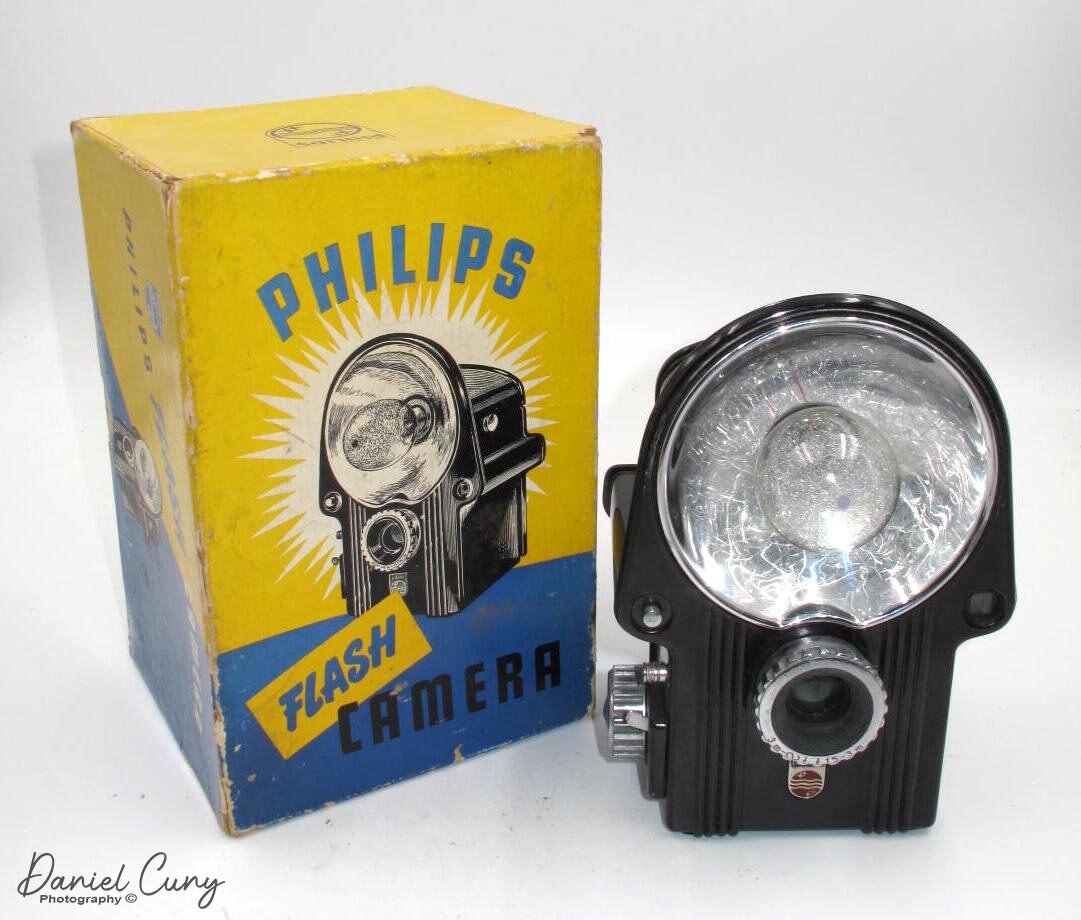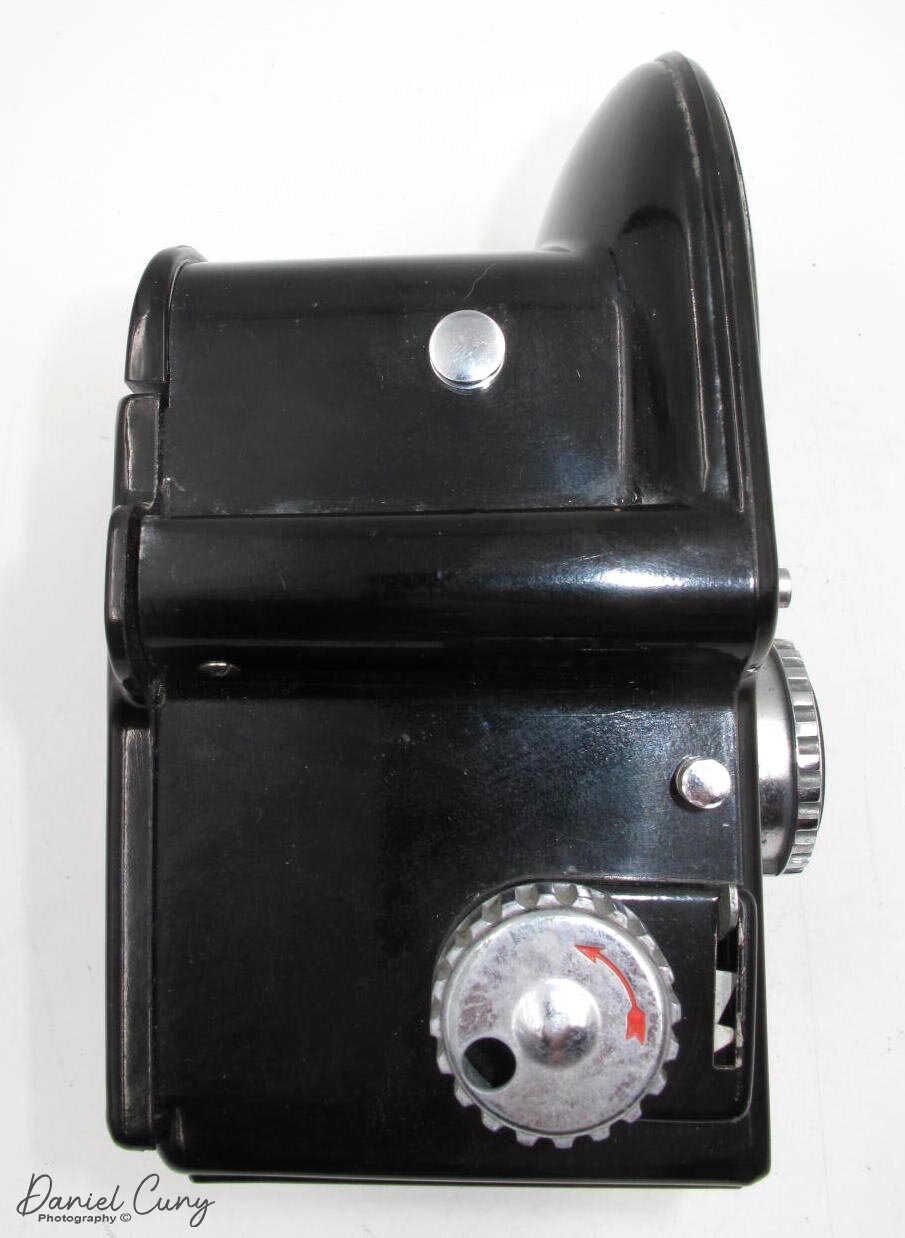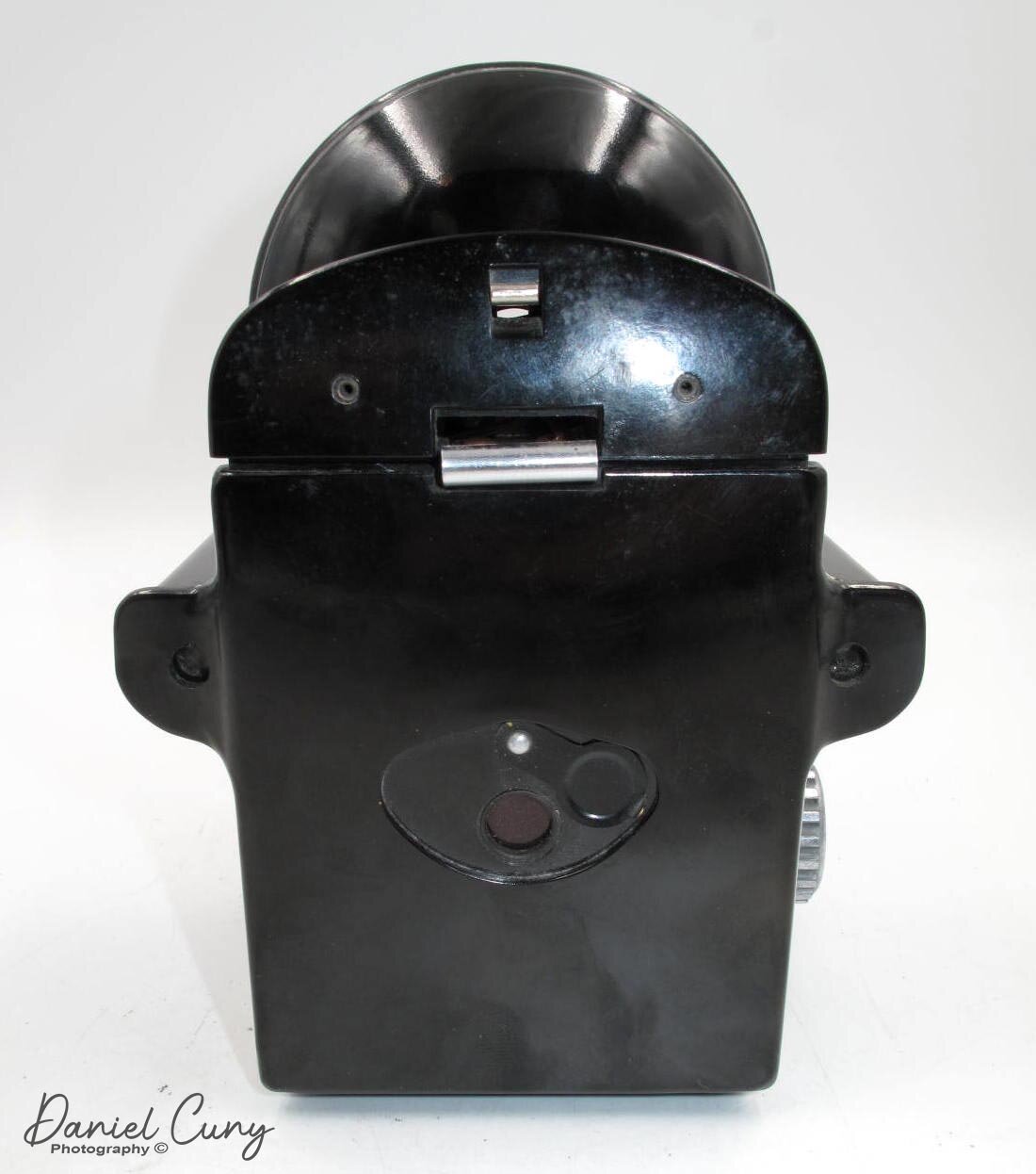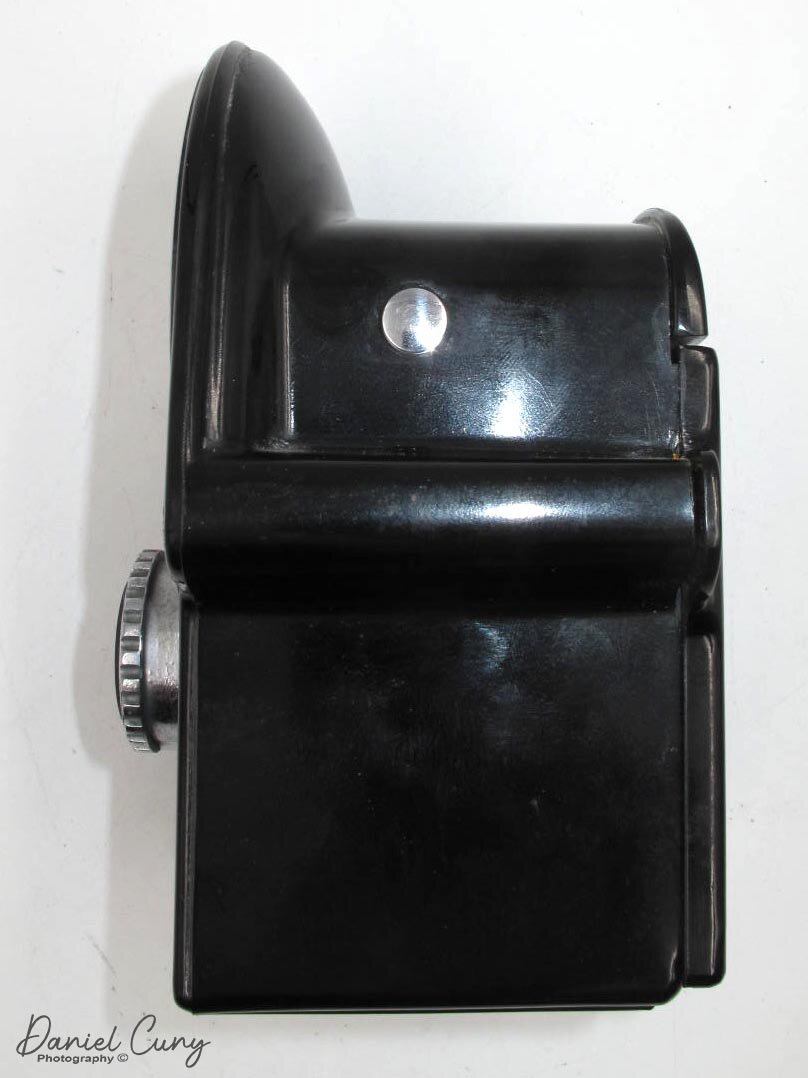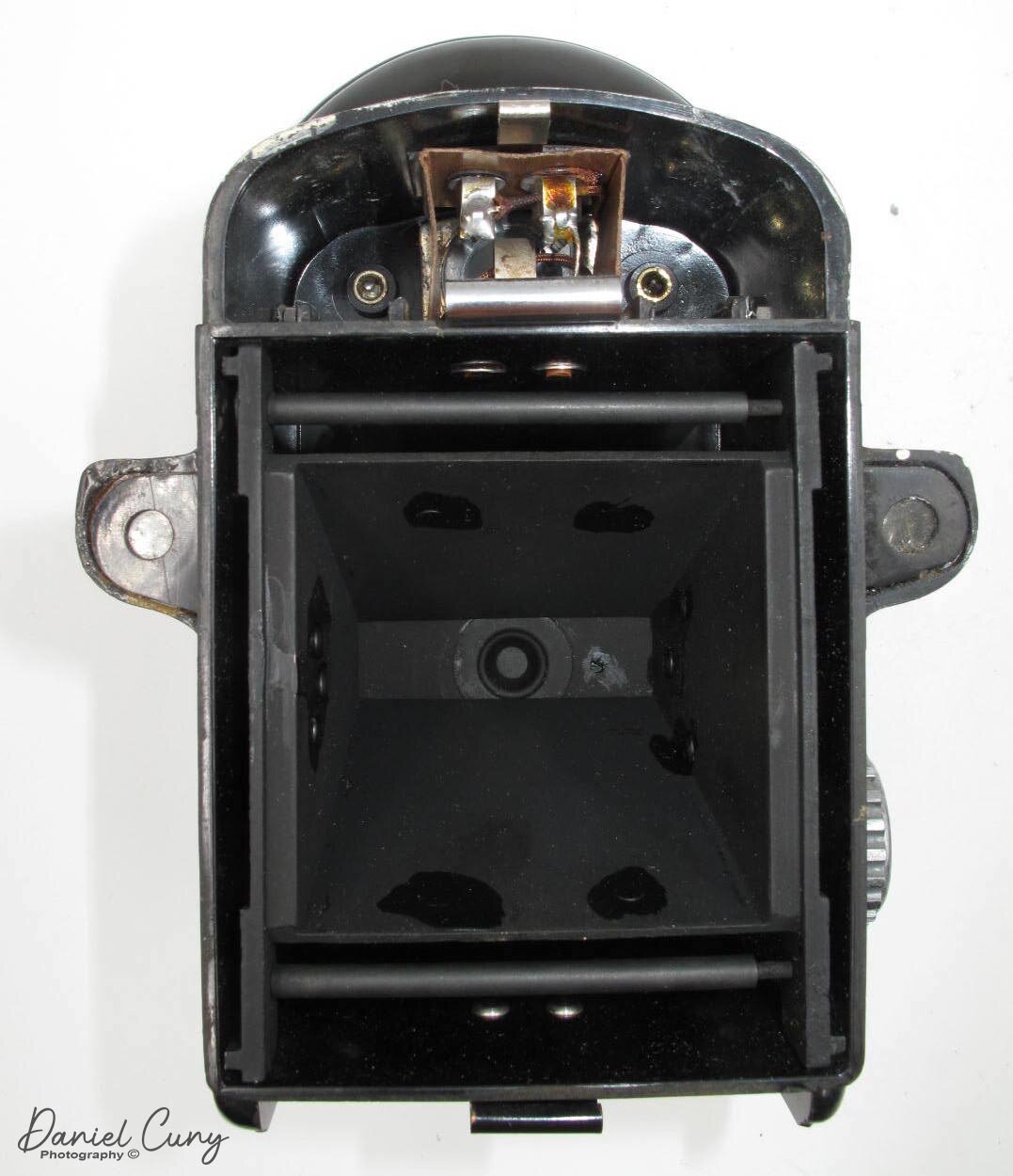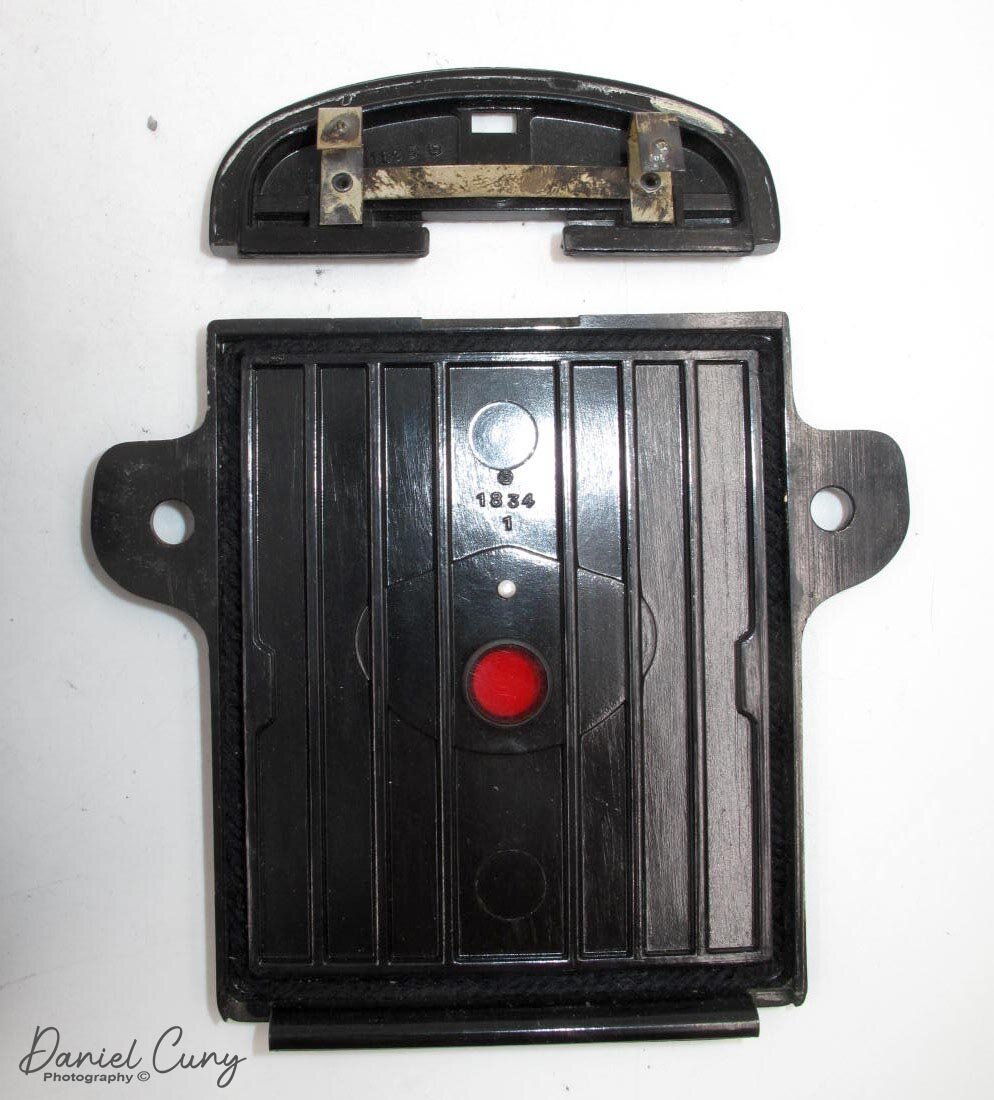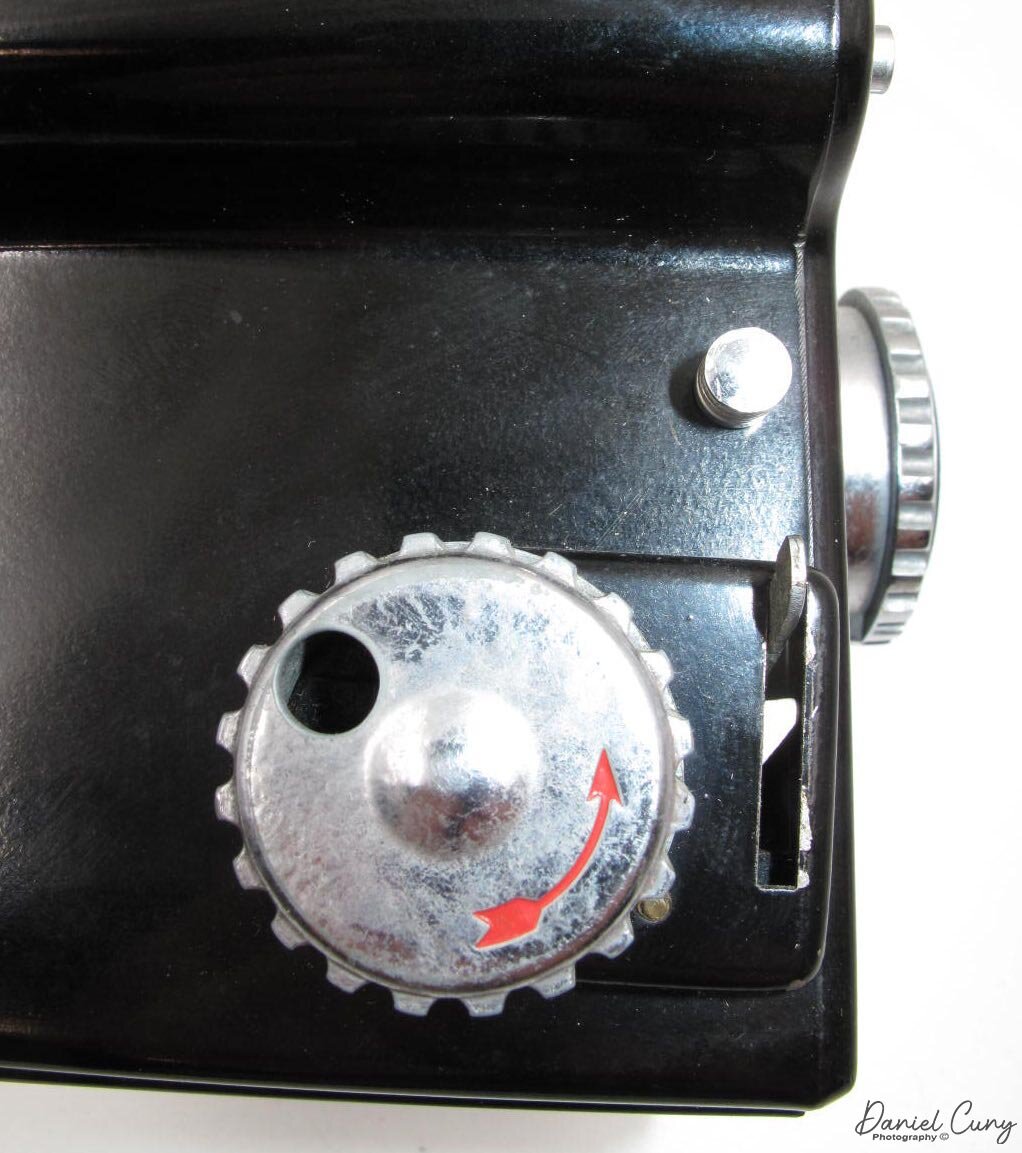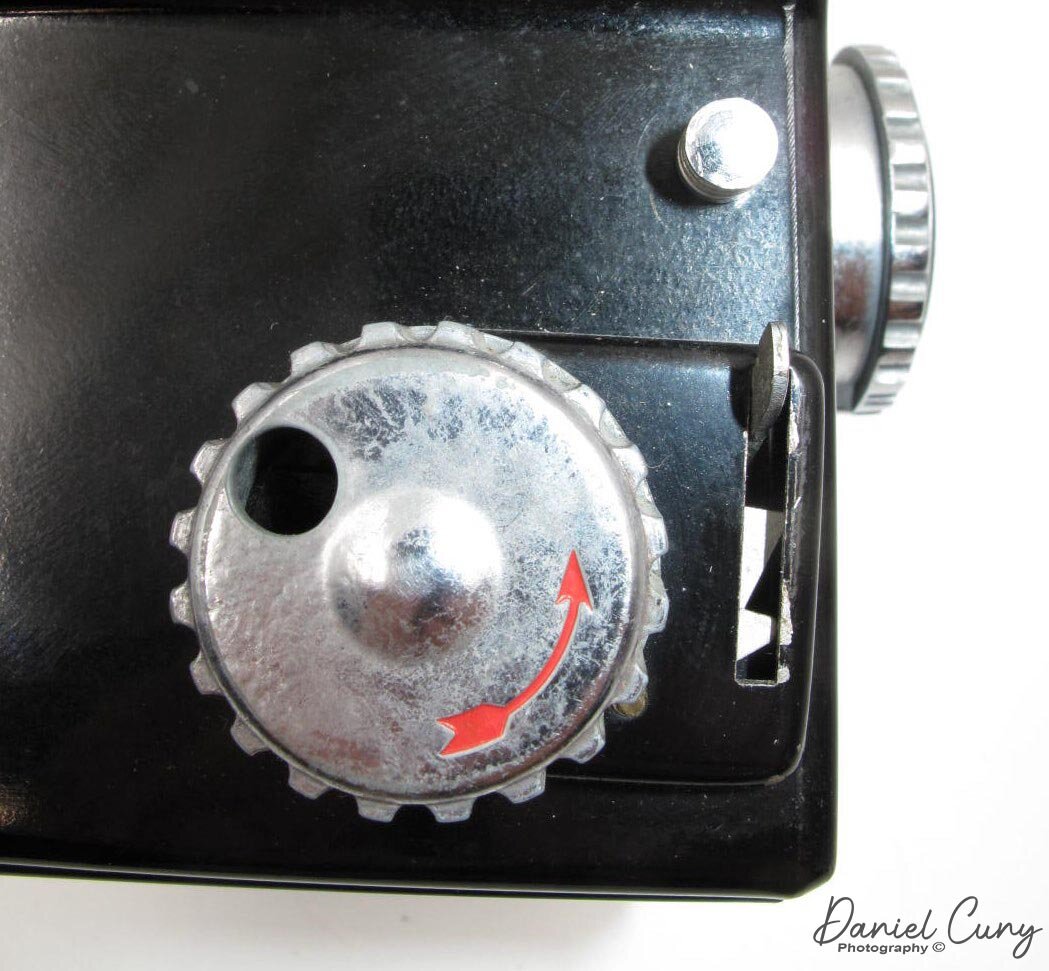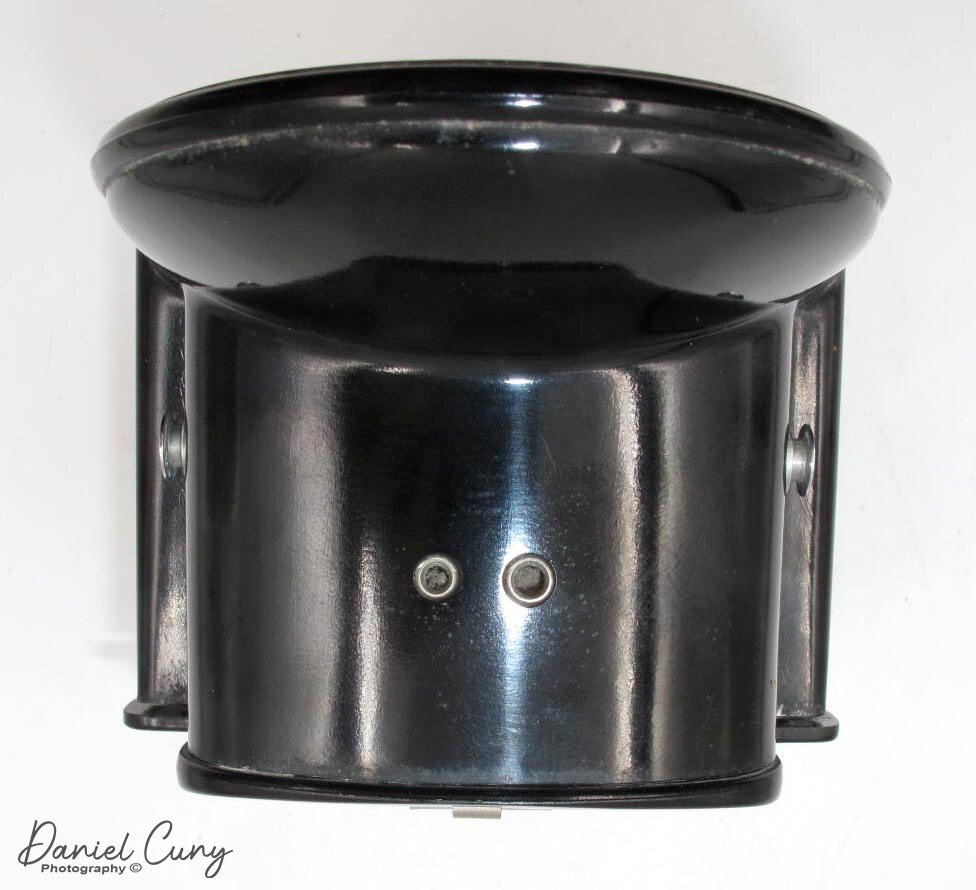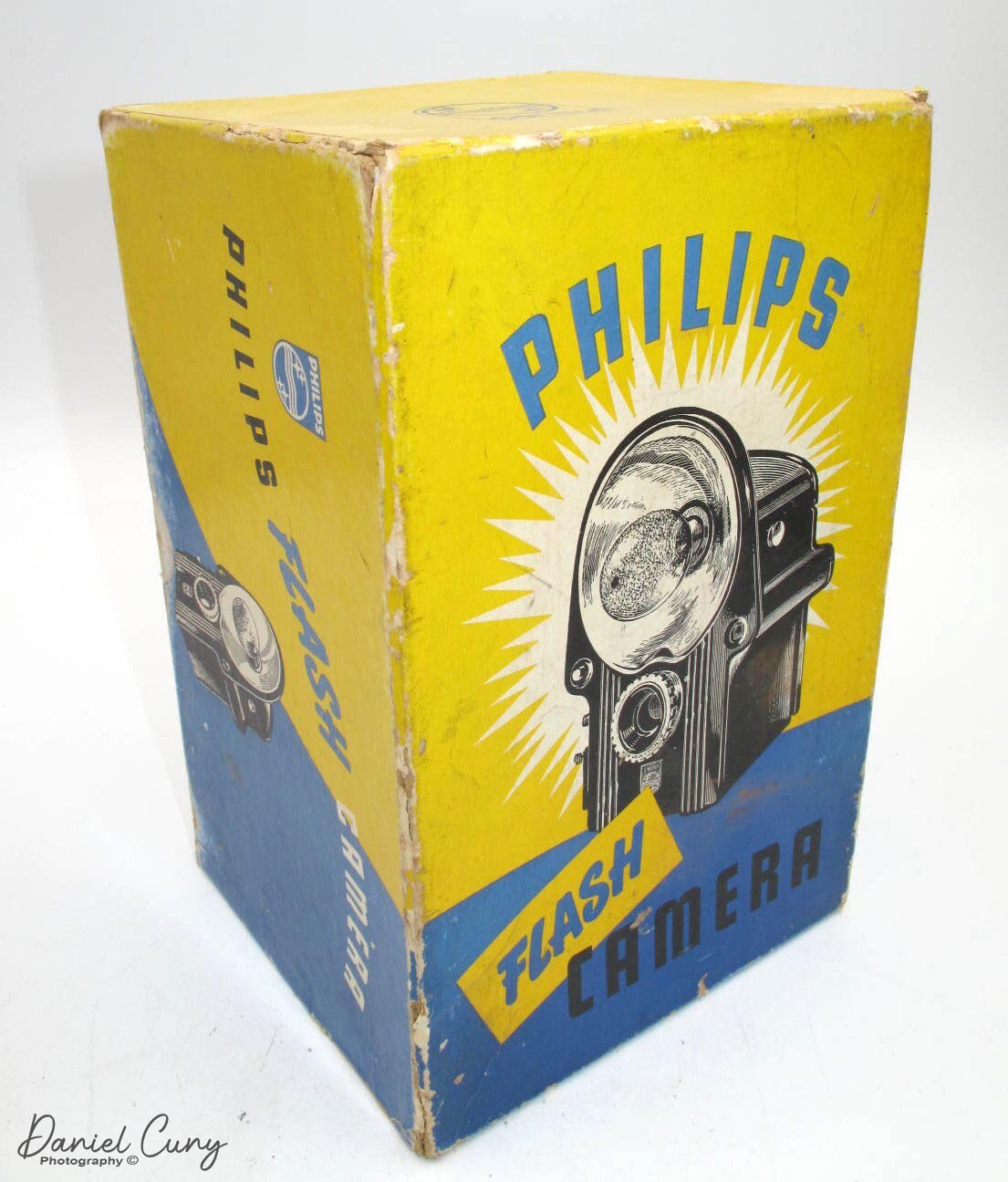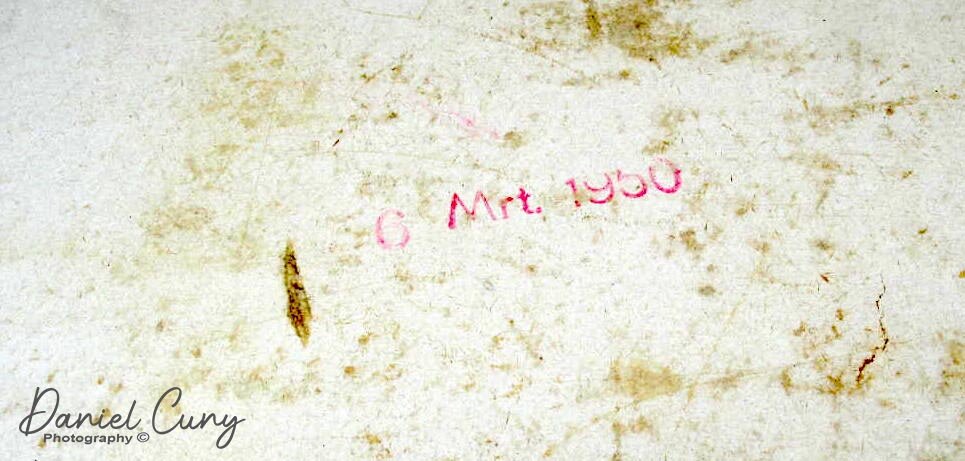Camera and Original Box
This week's posting is on a very simple and relatively rare camera to find in the U.S. and from what I understand even somewhat difficult to find in Holland and France where the camera was distributed. This week's posting is on the Philips Camera Flash.
Philips N.V. is currently known as a multinational electronics manufacturer in the Netherlands. It now manufactures a wide array of products, mainly focusing on health products and other electronic products, including electric flash units. Back in 1950, when the Camera Flash was made, Philips produced flashbulbs for the camera market, and it is believed they made the Camera Flash to promote flashbulb sales in Europe. Philips Camera flash was made for only one year in 1950. It's very similar in design to the Spartus Press Flash, a camera made between 1939-1950 or the Falcon Press Flash, which was built 1939-1941, so the timing makes sense to me.
The significance of the Spartus Press and the Falcon Press Cameras is they were the first to have a built-in flash reflector built into the camera. While the Camera Flash resembles the Press Flash and Falcon Press, it is much sleeker and more refined. The camera is made from Philite, similar to Bakelite, and developed by the Philips company circa 1923. Philite originally was used for Philip's radio production. The camera is more compact in the design but does resemble the Press Flash as it has a large flash reflector over the lens. The camera produces a 6x6cm format image onto 620 film.
The layout of the camera is straightforward. The camera's measurements are 6.5" tall by 4.5" wide by 4" deep. The massive flash reflector takes up more than half the cameras real estate on the face of the camera, measuring 3.5" in diameter. Below the flash reflector is the lens, which has a set aperture of F11. The lens can be turned to either focus at 1.5-3 meters, or turning it the other way to 3" to infinity. Below the lens is the Philips nameplate.
On the left of the camera, as you'd be taking a photo (or from behind), is the small viewfinder that I find challenging to use. On the right side of the camera is the winding knob to advance the film. Once the photo is taken by the shutter release, which is just in front of the winding knob, a lock comes down in the shutter release area to lock the shutter to avoid double exposure. Just above the shutter release is a bar. When it pressed is set the shutter to 1/25th shutter speed. When it's pulled out, the shutter is set to "B."
On the back of the camera are two panels that can be removed. The lower is for loading and unloading the film. The top chamber is for the batteries for the flash. There is also a small swinging door over the red window, which you can slide over to see the film numbers when you advance the film to the next frame. On both the right and left side of the camera are lugs for the camera strap, which my camera doesn't have. There are also two slots on the top of the camera, which I cannot find out what their purpose is.
Id love to hear from you regarding this or any other post I’ve done. Also, if there’s a camera you’d be interested in knowing more about. I might even have it in my collection.
